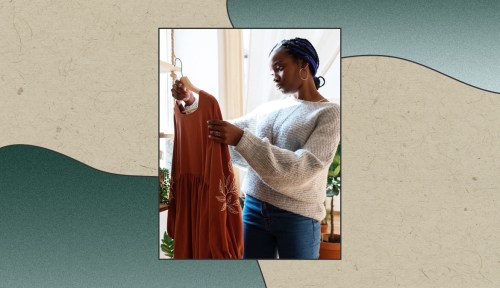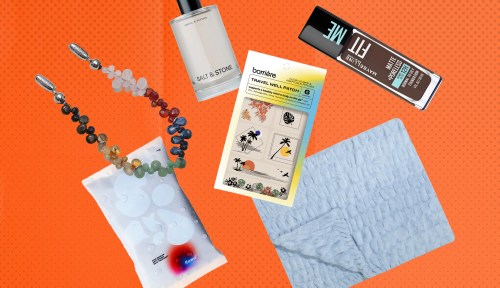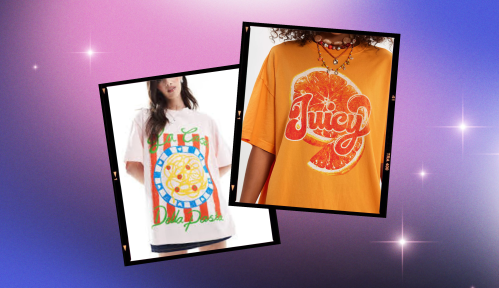How To Make More Eco-Friendly Choices When You Shop for New Clothes
Before you add to cart, take a look at these tips to be more sustainable and eco-friendly when shopping for new clothes.

Every day, we’re inundated with new trends and the next “it” clothing items to add to our shopping carts. So much so that it feels nearly impossible to keep up. That’s the prime issue with the fashion industry in today’s world: Its endless cycle of overproduction and overconsumption causes harm to both people and the planet.
Experts in This Article
“The rate and volume with which we wear and discard our clothing has resulted in an unsustainable system that relies on the exploitation of planetary and human resources,” says Alyssa Beltempo, a slow fashion expert and sustainable stylist. “Two-thirds of our clothes are made from synthetics derived from fossil fuels, and 20 percent of industrial water pollution is due to garment manufacture and dyeing. Millions of garment professionals work in unfair and unsafe conditions, simply so that we can wear a garment an average of five times before discarding it.”
Every year, 21 billion pounds of textile waste is sent to landfills. That’s 85 percent of all textiles produced, and to put it into perspective, it’s the equivalent of one garbage truck filled with clothing being dumped in a landfill every second. Much of this waste can be attributed to fast fashion brands.
“The trend cycle has moved from four seasons to 52 micro seasons, with new styles being dropped weekly—even daily—from some ultra fast fashion retailers. The only way to sustain this pace is by producing high volumes of clothing at a low cost, and encouraging a quick turnover,” Beltempo says. “Coupled with the accelerated pace of social media, many retailers design obsolescence into their clothes so that we keep shopping, instead of discovering and asserting our own personal style.”
By ditching trendy pieces of clothing and instead focusing on shopping for eco-friendly options that are meant to stay in your wardrobe for years to come, you can help stop the cycle. Here, five ways to make eco-friendly choices when shopping for new clothes.
1. Shop your own closet first
One of the most planet-friendly things you can do is utilize what you already have before buying new. “Orsola de Castro, co-founder of Fashion Revolution, said it best: ‘The most sustainable garment is the one you already have,’” Beltempo says. Before buying new clothes, Beltempo recommends getting to know what’s in your closet and using some creativity to come up with new looks.
“Sustainability is something that everyone can participate in, because it’s a choice, not a product,” she says. “Everyone has different financial, time, and body privileges, and I believe our power lies in reducing our fashion consumption through being creative and finding joy in what we already have in our closet.”
Beltempo says even if you come up short, you’ll have a better understanding of your personal style and any gaps that exist in your wardrobe. “If you don’t know where to start, my stylist tip is to see your clothes as elements of style,” she adds. “Look for common themes like cuts, shapes, textures, and color to help you focus on what you like and need.”
2. Make a list or create a vision board
We get it—whether you’re scrolling through your favorite clothing website or perusing racks in person, it’s easy to wind up with more than you need by the time your shopping session comes to an end. That’s why Beltempo recommends coming up with a list of essentials before even stepping foot in a store.
“Preparing a list is the best way to reduce the chances of overshopping and buying clothes you don’t need, or even like,” she says. “I recommend having some wish-list items on there, as well as practical items to fill wardrobe gaps. A list quiets the noise of trends, and reduces unplanned purchases.”
If you’re a visual person, start a vision board—or a Pinterest board—of looks you love and wish to replicate someday. Then as you spot pieces of clothing from those collections over time, you’re able to build your dream wardrobe slowly and sustainably.
3. Ask yourself some important questions
Sometimes we need to do a little real talk with ourselves before making a purchase. Beltempo suggests pausing to ask yourself some questions that can help you make a more intentional choice and ensure what you’re buying will still be in your closet for the long run. Before clicking “buy now,” consider the following:
- Do I love this item and feel great in it?
- Does it work with what’s already in my closet, or would I have to buy something else to make it work?
- Can I make 3-5 new outfits with this garment using what I already have?
- Does it align with my values? (For example: Is it secondhand or sustainably-made?)
- Can I see myself wearing it in 3-5 years? If not, is it easy to alter?
4. Shop secondhand first
Aside from not buying anything at all, shopping secondhand has been found to be the most sustainable way to purchase new clothes—even over buying from sustainable brands. By opting for used clothing, no new resources are needed. Instead, you’re extending the life of clothing that may have otherwise been discarded. “Shopping secondhand keeps clothing out of landfills and is a great way to curate a true personal style identity,” Beltempo says.
Thrifting for your perfect wardrobe is also easier today than it was years ago. Not only can you shop in person, but there are also dozens of online thrift stores that make it easy to find exactly what you’re looking for. “Just remember to ask for measurements before purchasing, and make sure you know your own to avoid returns,” she says.
5. Prioritize brands with sustainable qualities and certifications
In a world of greenwashing, finding sustainable brands to support isn’t always easy. That’s why it’s important to have some sustainable qualities and certifications in mind that show the brand is actually prioritizing people and the planet and isn’t just all talk. Beltempo says to begin by seeing how transparent the brand is.
“Transparency doesn’t guarantee sustainability or mean that a brand is being responsible, but it does help shop with intention and alignment with our values,” she says. “Fashion supply chains are complicated, and many brands use this complexity to ignore fashion’s problems of exploitation and waste. The more information shared, the better. And don’t be shy to reach out and ask for more information before a purchase.”
Next up, look at the rate at which the brand is producing clothing. While fast fashion brands like Shein produce millions of new pieces annually, many sustainable brands have smaller collections and fewer product drops, focusing on high-quality, long-lasting pieces. “Even if a company is selling garments that are made of recycled materials, if they’re producing at a high rate and volume, they’re operating with a fast fashion mindset—and this is an unsustainable practice,” Beltempo says.
Lastly, check for certifications. While Beltempo says they don’t always equate to responsible production, some wins include being B Corp certified (which shows the company adheres to high standards of environmental and humanitarian practices), Global Organic Textile Standard (GOTS) certified (the leading textile processing standard for organic fibers), and OEKO-TEX certified (processing standard that applies to all textiles, not just organics).
Sign up for the Well+Good SHOP Newsletter
Get exclusive deals on wellness, beauty, fitness, and food products that have been hand-picked by our editors.
Got it, you've been added to our email list.










